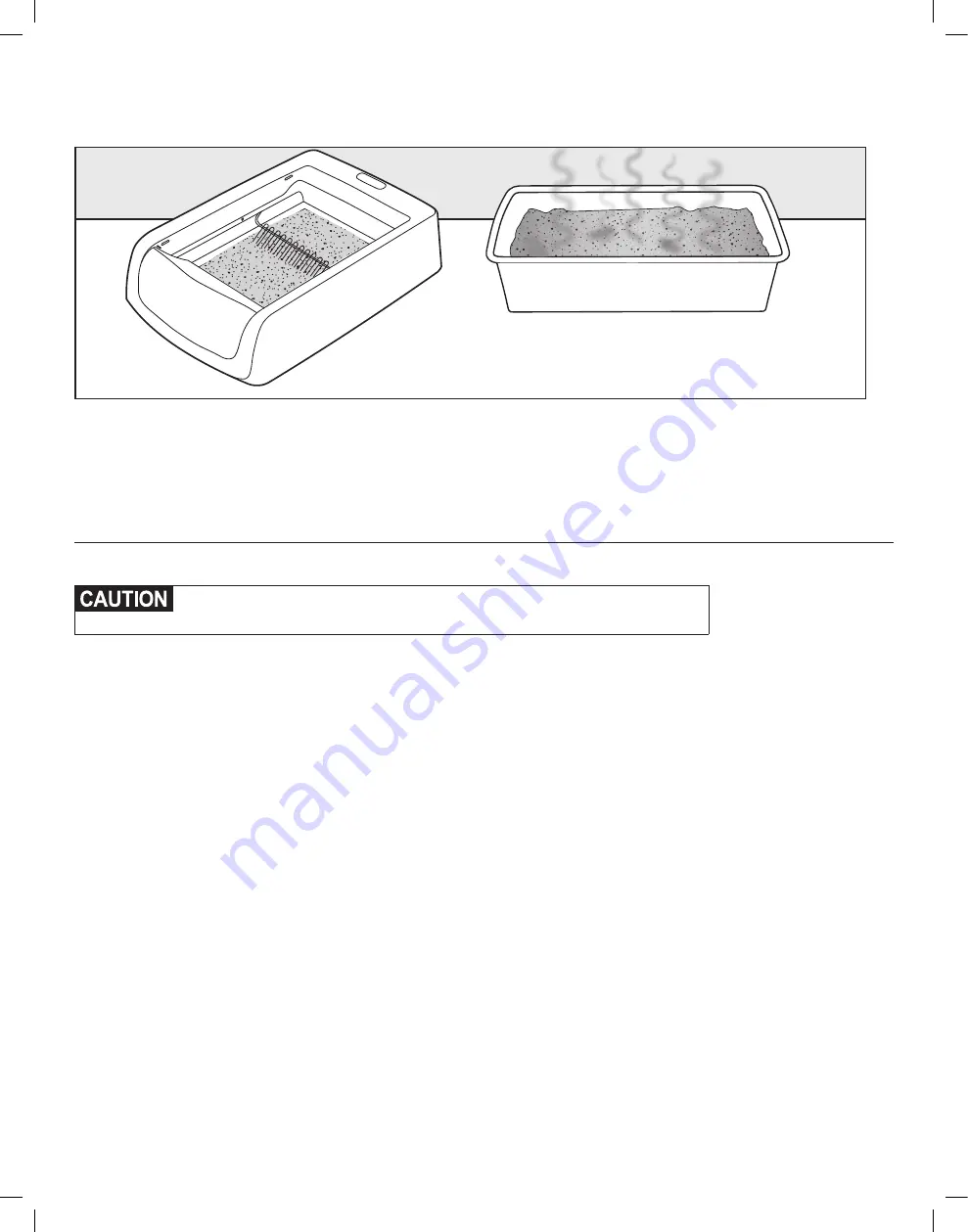
8
Customer Care 1 (800) 732-2677
Introducing Your Cat to the Litter Box
Most cats easily adapt to the PetSafe
®
ScoopFree
®
Self-Cleaning Litter Box. Some cats may need an adjustment period to help acclimate to their
new litter box. Here are a few tips to help with the transition:
1. Place the new PetSafe
®
ScoopFree
®
Self-Cleaning Litter Box next to your cat’s current litter box. Allow your cat to have access to the old and
new litter boxes for at least a week. This time may vary depending on the temperament of your cat.
2. Add a few handfuls of your cat’s old litter to the crystal litter tray. You can also add a few handfuls of the crystal litter to your cat’s old litter box.
3. Stop cleaning your cat’s old litter box, allowing it to remain dirty. Cats prefer a clean litter box, so as the litter in the old litter box gets shallow
and its odor increases, this should make the PetSafe
®
ScoopFree
®
Self-Cleaning Litter Box more appealing.
4. Once your cat has transitioned to the PetSafe
®
ScoopFree
®
Self-Cleaning Litter Box, remove the old litter box from the area.
For Kittens Under 6 Months Old
If your kitten is under 6 months of age, leave the unit UNPLUGGED and scoop waste until kitten is 6 months old.
Place the tray with the crystal litter under the litter box frame and remove the waste trap lid on the front of the litter box to make it easier for the kitten
to enter and exit. Once your kitten is 6 months old, plug in the PetSafe
®
ScoopFree
®
Self-Cleaning Litter Box and replace the waste trap lid for a box
that is hassle-free and consistently clean.
Litter Box Tips for Kittens:
• Kittens will need to use the bathroom after eating, playing or napping. It is a good idea to place your kitten in the litter box after these activities
to help them understand that this is the appropriate place to go to the bathroom.
• Place the litter box away from the kitten’s food and water bowl. In the wild, cats use the bathroom away from where they eat and drink as a
defense from predators. Placing the litter box near the kitten’s food or water could lead to “going outside the litter box” issues.
• For a kitten, the litter box needs to be in a location that is really easy to find since they do not have great bladder control. Getting all the way
across the house or down a flight of stairs to find the litter box could result in accidents.
• The litter box should be placed in an open area where your kitten can easily see it. The location should also be safe and quiet so your kitten is
not distracted or worried about being startled, such as by loud noises or the family dog.
• Just like you, your kitten likes it clean. Scoop out waste often and change the litter tray every few weeks.
• A kitten’s litter box usage is more frequent than that of an adult cat. Stir litter crystals once a week to distribute saturated crystals to better
accommodate high urine output.
Note:
Although the PetSafe
®
ScoopFree
®
Self-Cleaning Litter Box is quiet when running and only runs after use, you may want to leave it
unplugged for a few days so your cat can get used to it without any distractions. If you leave it unplugged, you need to manually scoop solid waste
until your cat is fully transitioned. Also if you are using a cover on the PetSafe
®
ScoopFree
®
litter box and have not used one in the past, you may
want to remove it until your cat is using the PetSafe
®
ScoopFree
®
litter box for its litter box.


































